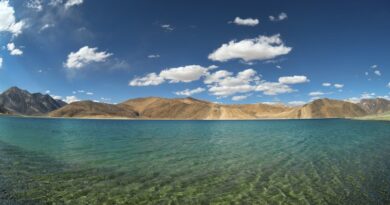Centre looks to begin second phase bidding for Namami Gange projects by year-end
Even as just over 40 per cent of the proposed sewage infrastructure projects under the ambitious Namami Gange programme have been completed till July 2020, the Centre is looking to initiate the bidding process for projects under the second phase in the next three months.
Having secured additional funding to the tune of $400 million from the World Bank for the Second National Ganga River Basin Project (SNGRBP), the National Mission for Clean Ganga (NMCG) is pushing for beginning of the second phase of bidding of projects as early as possible.
The bidding process for projects under the second phase will start in the next three months, NMCG Director General Rajiv Mishra said recently. The funding for the second phase and related projects are expected to get kickstarts after the first phase of the Namami Gange programme ends on December 31, 2021.
Till July 31 this year, just 132 of the 315 proposed sewage treatment projects across the main Ganga basin states of Uttarkhand, Uttar Pradesh, Jharkhand, Bihar and West Bengal besides Delhi, Himachal Pradesh and Haryana, had been complted. As many as 148 projects are under progress while 28 are in the tendering stage, according to the NMCG. Only seven projects are yet to be tendered in the first phase.
The new funding from the World Bank will finance construction of expanded water networks and treatment facilities in order to stem pollution and strengthen river basin management. The overall amount also includes an amount for the first IBRD guarantee in the water sector in India.
Under the second phase, projects on the tributaries of Ganga would be taken up with a view to address pollution abatement in the entire Ganga basin. The World Bank loan provides $150 million (about Rs 1134 crore) for three new hybrid annuity projects in Agra, Meerut and Saharanpur over the Yamuna and Kali rivers.
Another amount of $160 million (about Rs 1209 crore) has been provided for ongoing DBOT (design, build, operate & transfer) projects in Buxar, Munger, Begusarai and hybrid annuity mode (HAM) projects in Digha, Kankarbagh in Patna (Bihar), and Howrah, Bally and Baranagar in West Bengal for the second phase.
Under the second phase, 482 million litre per day (MLD) sewage treatment capacity is proposed to be created. Also, 378 MLD sewage treatment capacity and 911 Km of sewage network approved under phase-one will be funded.
The remaining $71 million of the World Bank loans will be used for various activities pertaining to institution development ($20 million), improving investment resilience to COVID-19 like emergency situations ($5 million), performance-based incentive for urban local bodies ($30 million) and for programme communication & management ($16 million).



